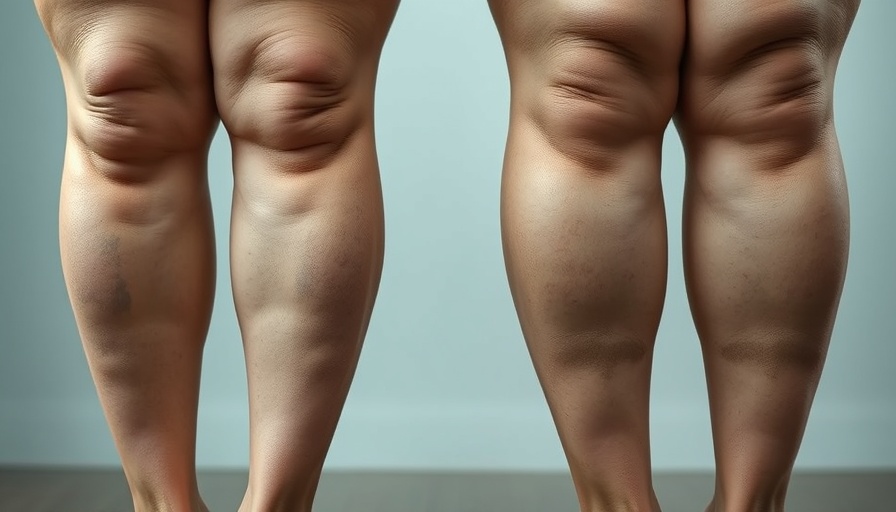
Understanding Lipedema Fat: What Sets It Apart
Lipedema is not just another label for stubborn body fat; it’s a chronic condition that uniquely affects millions of women worldwide. Distinct from regular fat, which can often be managed through diet and exercise, lipedema fat persists despite efforts at weight loss, becoming progressively more challenging over time. This key distinction underscores serious implications for those affected, making it vital for individuals and medical professionals alike to recognize the condition and its symptoms, which include heavy, uncomfortable limbs that may feel tender even to light touch.
In 'Why THIS type of fat can’t be burned off', the discussion dives into the unique challenges posed by lipedema fat, exploring key insights that sparked deeper analysis on our end.
Hormonal Changes and Their Role in Lipedema
One of the most troubling aspects of lipedema is its correlation with hormonal changes, often surfacing during critical periods in a woman’s life—puberty, pregnancy, and menopause. This hormonal link highlights the need for targeted awareness and education, especially as women navigate these life stages. Unfortunately, many women are misdiagnosed, told they simply need to lose weight, leading to frustration and a feeling of being unheard within the medical system.
Why Medical Awareness is Crucial
The media and healthcare systems frequently dismiss lipedema as mere obesity, creating a gap in understanding that leaves countless women without the help they need. Ensuring that healthcare providers recognize and understand lipedema is essential for effective treatment and support. This includes listening to and validating patients' experiences rather than prescribing quick weight loss solutions.
Managing Lipedema: Treatment Options
Currently, there is no cure for lipedema, but various management strategies can alleviate symptoms. Compression garments play an important role, offering support and reducing discomfort. Additionally, lymphatic massage and gentle exercises can improve circulation and lessen the feeling of heaviness. Each treatment option works differently depending on the individual, making personalized healthcare approaches paramount in treating this condition.
Looking to the Future: Awareness and Innovations
As awareness of lipedema grows, the hope is that more healthcare professionals will be trained to recognize and treat this condition effectively. Research is ongoing, and innovations in treatment may provide additional options in the near future. It’s essential for those experiencing symptoms to advocate for themselves and seek medical support tailored to their specific needs.
If you or someone you know is interested in improving foot health through proper care and ergonomic practices to support overall health, consider connecting with a local podiatrist for a consultation. Proper foot health contributes to a better quality of life and can enhance overall wellness.
 Add Row
Add Row  Add
Add 




Write A Comment